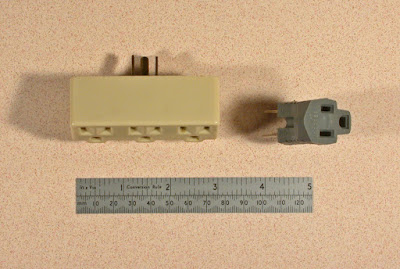Sunday, January 1, 2012
Resolve to anticipate “shoelace failures” and plan around them
Every component or product has a normal way of wearing out and failing. For a shoelace, the failure location is at the top eyelet. That’s because most of the sliding motion during tightening occurs there, and the knot also is pulled tightest there. We aren’t at all surprised when a shoelace breaks at that location. If it failed at another location we would suspect something unusual had happened - like a knitting problem, or that cigarette ash had been dropped there and burned it.
Batteries in a presenter remote or a laser pointer will wear out and need to be replaced eventually. We can plan ahead to anticipate that normal problem. Carry a spare set of fresh batteries to keep that component from causing us a problem during a PowerPoint presentation.
At the end of a post last February about checklists, I mentioned three other simple things I also carry along with an extension cord. One is a three-way adapter for my laptop and projector, and a second is a two-prong adapter (for ungrounded outlets sometimes found in historical buildings). A third a wooden block for tilting my projector upwards. (Long ago I usually could find an ashtray in the room, but not anymore).
Donald J. Wulpi’s book on Understanding How Components Fail used the example of a shoelace in his first chapter. You can see a preview at Google Books.
Labels:
failure analysis,
planning,
PowerPoint,
worst moments
Subscribe to:
Post Comments (Atom)



No comments:
Post a Comment